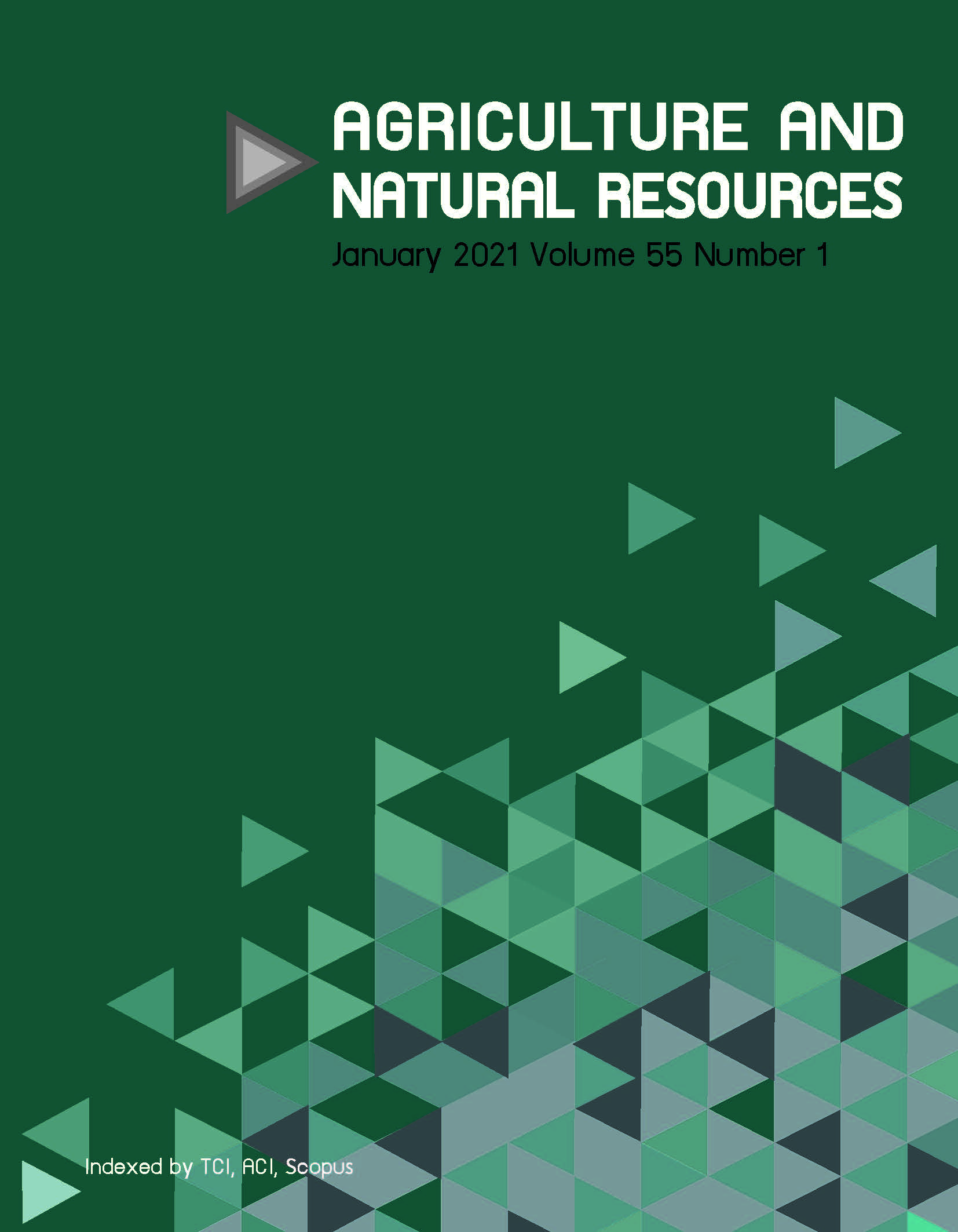Clustering of white, red and purple rice cultivars according to their total phenolic content, total flavonoid content and antioxidant capacity in their grains
Keywords:
Antioxidant capacity, Cluster analysis, Rice, Total flavonoid content, Total phenolic contentAbstract
Rice grains are a rich source of antioxidant compounds. The objectives of this study were to determine the total phenolic content (TPC), total flavonoid content (TFC) and antioxidant capacity (AC) in 174 rice germplasms, comprised of 152 white, 10 red and 12 purple pericarp cultivars, and to cluster the rice cultivars according to their TPC, TFC and AC levels using hierarchical cluster analysis (HCA). Among the tested germplasms, the TPC, TFC and AC levels of the red and purple pericarp cultivars were significantly higher than those of the white pericarp cultivars. A significant positive correlation between the TPC and TFC levels was found in all three color groups of rice cultivars. However, no significant correlation was found between the AC and TPC levels in the white pericarp rice. In contrast, a highly significant correlation (r = 0.918 and 0.806) was found between the AC and TPC levels in both the red and purple pericarp rice, while a significant correlation (r = -0.143 and 0.757) between the AC and TFC levels was found in the white and red pericarp rice. This suggested that the AC level in the red pericarp rice resulted from the phenolic and flavonoid compounds, while the major contribution to the AC level in the purple pericarp rice was from the phenolic compounds. The HCA revealed four groups with a distance value of 2.60. High TPC (5.134±0.459 mg GAE/g), TFC (10.034±0.668 mg RE/g) and AC (1844.769±294.773 μg AEAC/g) levels in the rice grains were found in six cultivars. Thus, these cultivars could be used as genetic resources for breeding to improve the antioxidant content in the future.
Downloads
Published
How to Cite
Issue
Section
License

This work is licensed under a Creative Commons Attribution-NonCommercial-NoDerivatives 4.0 International License.
online 2452-316X print 2468-1458/Copyright © 2022. This is an open access article under the CC BY-NC-ND license (http://creativecommons.org/licenses/by-nc-nd/4.0/),
production and hosting by Kasetsart University of Research and Development Institute on behalf of Kasetsart University.







